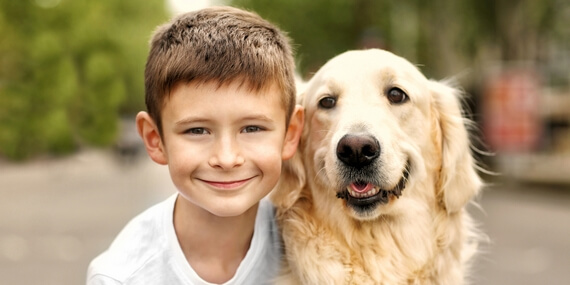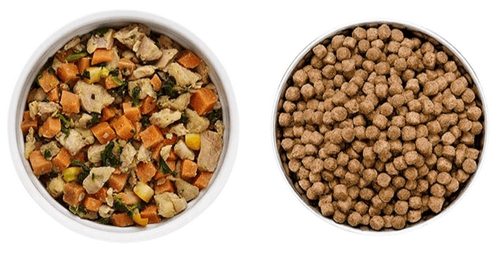Feeding Type 3 — Adult Dogs

Based on your quiz results… your dog’s ideal feeding type is Type 3.
Which means…
You need a food that provides complete and balanced nutrition for an adult dog.
What’s the best food for an adult dog?
Keep in mind…
Nutrient requirements for adult dogs are significantly different from those of puppies. Which is why only certain recipes are considered optimal for adults.
In general…
Any dog food that meets AAFCO guidelines for Adult Maintenance or All Life Stages is suitable for feeding an adult dog.
What if you don’t know your dog’s feeding type?
If you don’t know your dog’s feeding type, be sure to take our Feeding Type Quiz.

Best Food for Adult Dogs
The pages below include some of The Advisor’s most recommended brands for adult dogs. Look for recipes rated 4 to 5 stars that meet AAFCO nutrient profiles for Adult Maintenance or All Life Stages.
Frequently Asked Questions
Here are the most frequently asked questions we get about feeding adult dogs:
When can I safely switch my puppy to adult food?
Keep in mind…
Adult dog food can contain excessive amounts of calcium… which can make it unsafe for a puppy that’s still growing.
Especially for large and giant breeds.
So… it’s important NOT to switch your puppy to adult food too soon.
With that in mind…
The best time to switch your puppy to adult food depends on her breed size.
The table below can help you determine when it’s safe to switch your large breed puppy to adult dog food.1 2
| Breed Size | Adult Weight | Switch to Adult |
|---|---|---|
| Small breed | < 20 lbs | 9 – 12 mos |
| Med breed | 20 – 50 lbs | 12 – 14 mos |
| Large breed | 50 – 100 lbs | 15 – 18 months |
| Giant breed | Over 100 lbs | 18 – 24 months |
Keep in mind…
It’s much safer to keep your dog on puppy food too long… than to switch to an adult food too soon.
How to switch to a new adult food without making your dog sick?
In this video…
Dr. Gary Richter shares a simple feeding tip that can help lower your dog’s risk of getting sick when you switch to a new adult food.
It’s best to transition your dog to a different adult food… gradually.
Start by mixing 20% “new” and 80% “old” food together. Then, gently increase that amount to a full 100%… over the next 8 to 9 days.
| Transition Schedule | Old Food | New Food |
|---|---|---|
| Days 1 and 2 | 80% | 20% |
| Days 3 and 4 | 60% | 40% |
| Days 5 and 6 | 40% | 60% |
| Days 7 and 8 | 20% | 80% |
| Day 9 | 0% | 100% |
What if I don’t know my dog’s breed size?
Many times, a dog’s breed size or age may not be known. And breeds can be mixed. Which can be a big problem for a growing large breed puppy.
So, when in doubt, it’s far safer to assume you’re feeding a large breed puppy.
Wet or dry food — which is better for your adult dog?
Wet food can be a gentler way to ease your puppy to a typical adult diet.
That’s because…
Wet foods are softer and easier for a dog to chew than dry food.
And they’re more palatable, too.
After all, dry kibble contains just 10% water. Yet the moisture content of wet dog food is about 75%… similar to real natural food.
Notice the difference between highly-processed dry pellets and fresh wet food in this side-by-side comparison.

View The Advisor’s Best Wet Dog Foods here.
View The Advisor’s Best Fresh-Made Dog Foods here.

